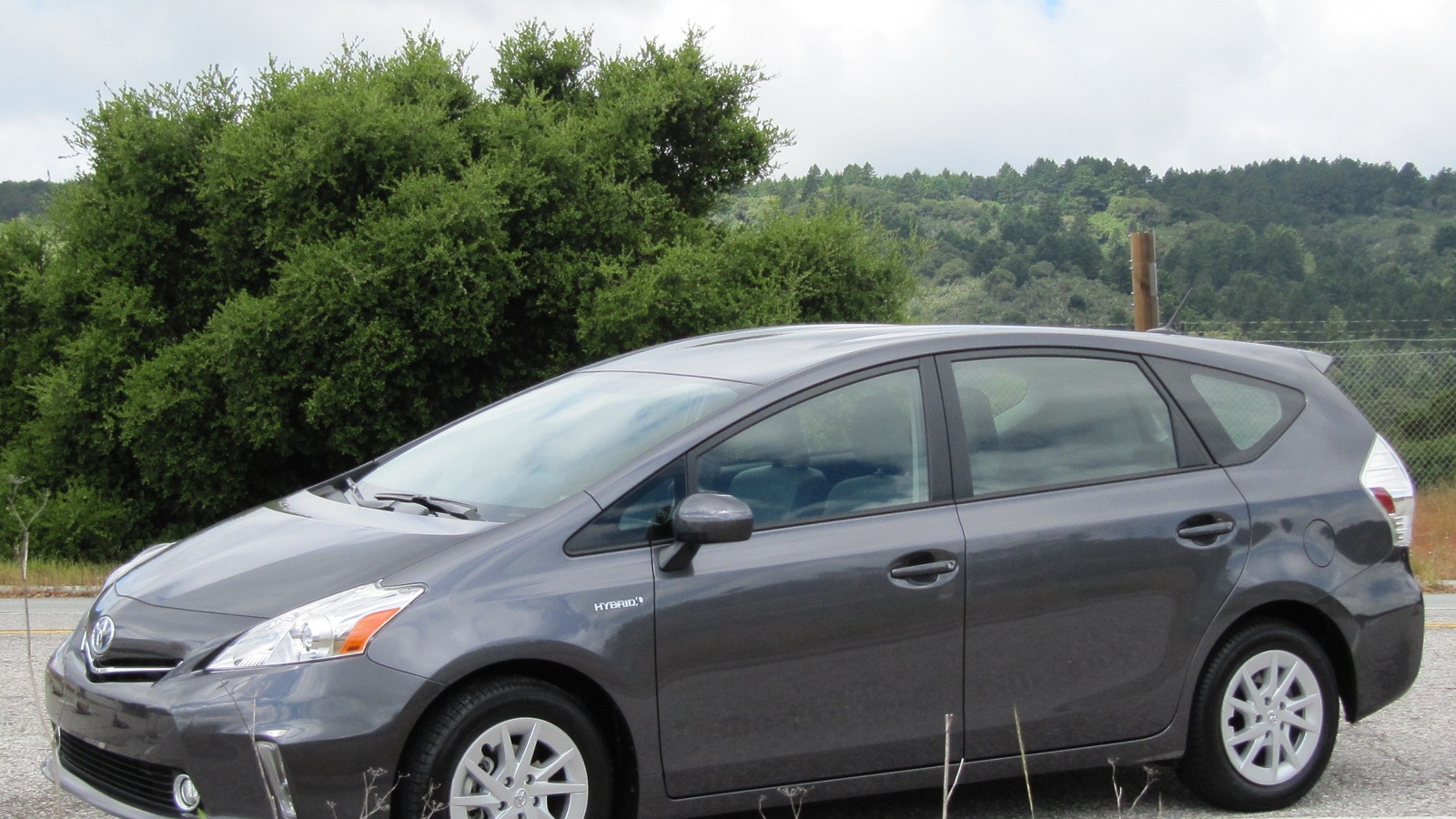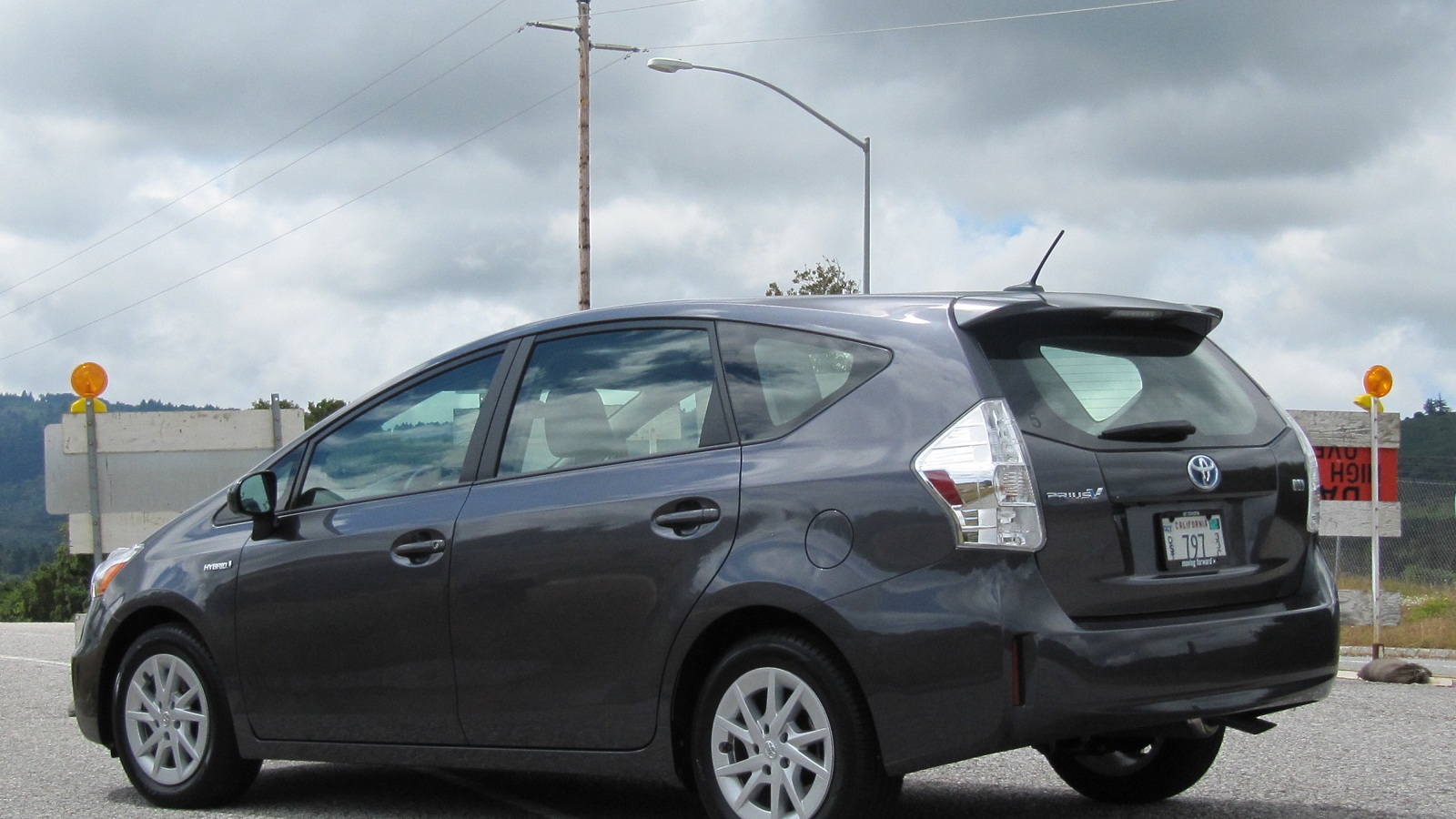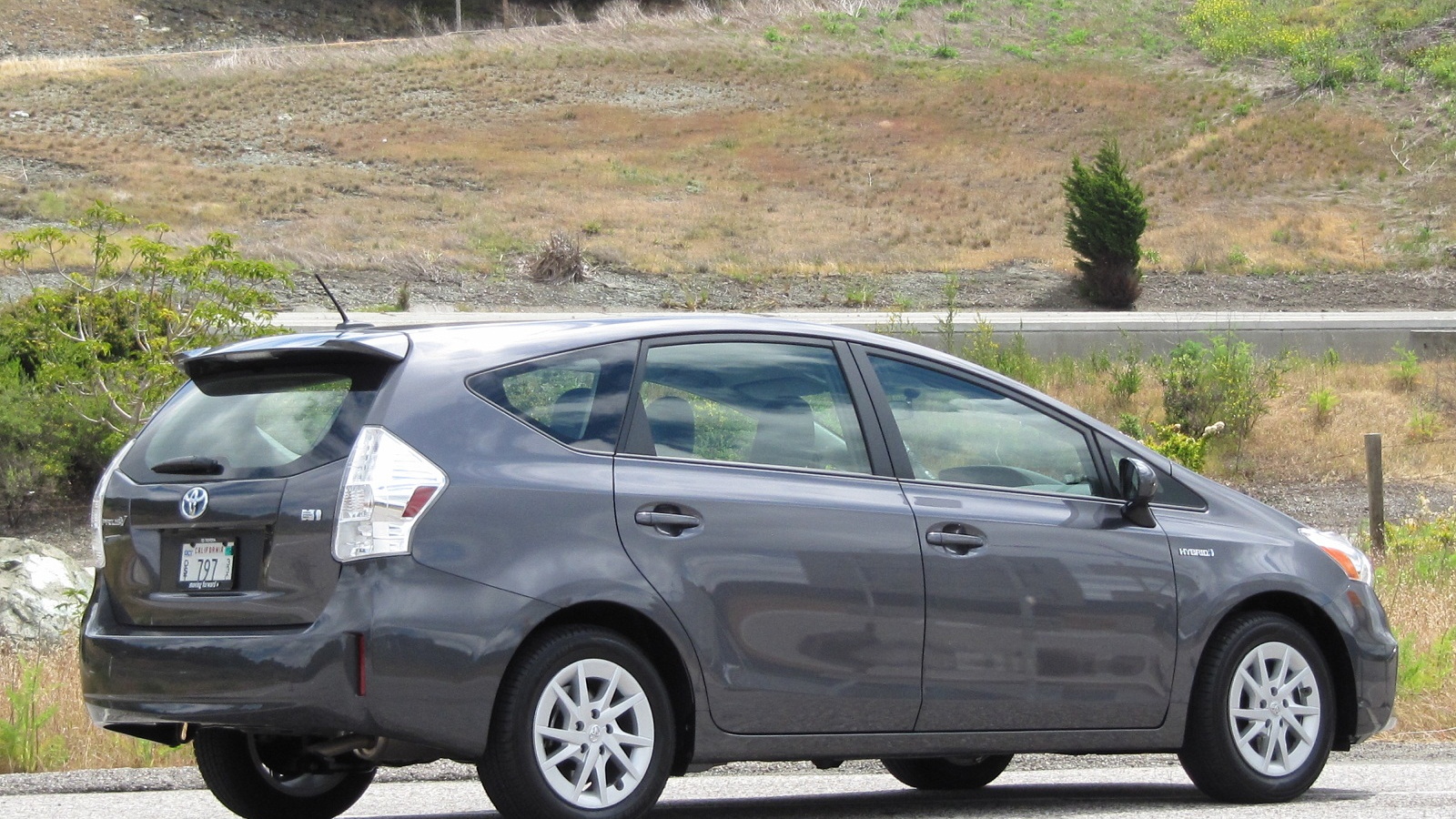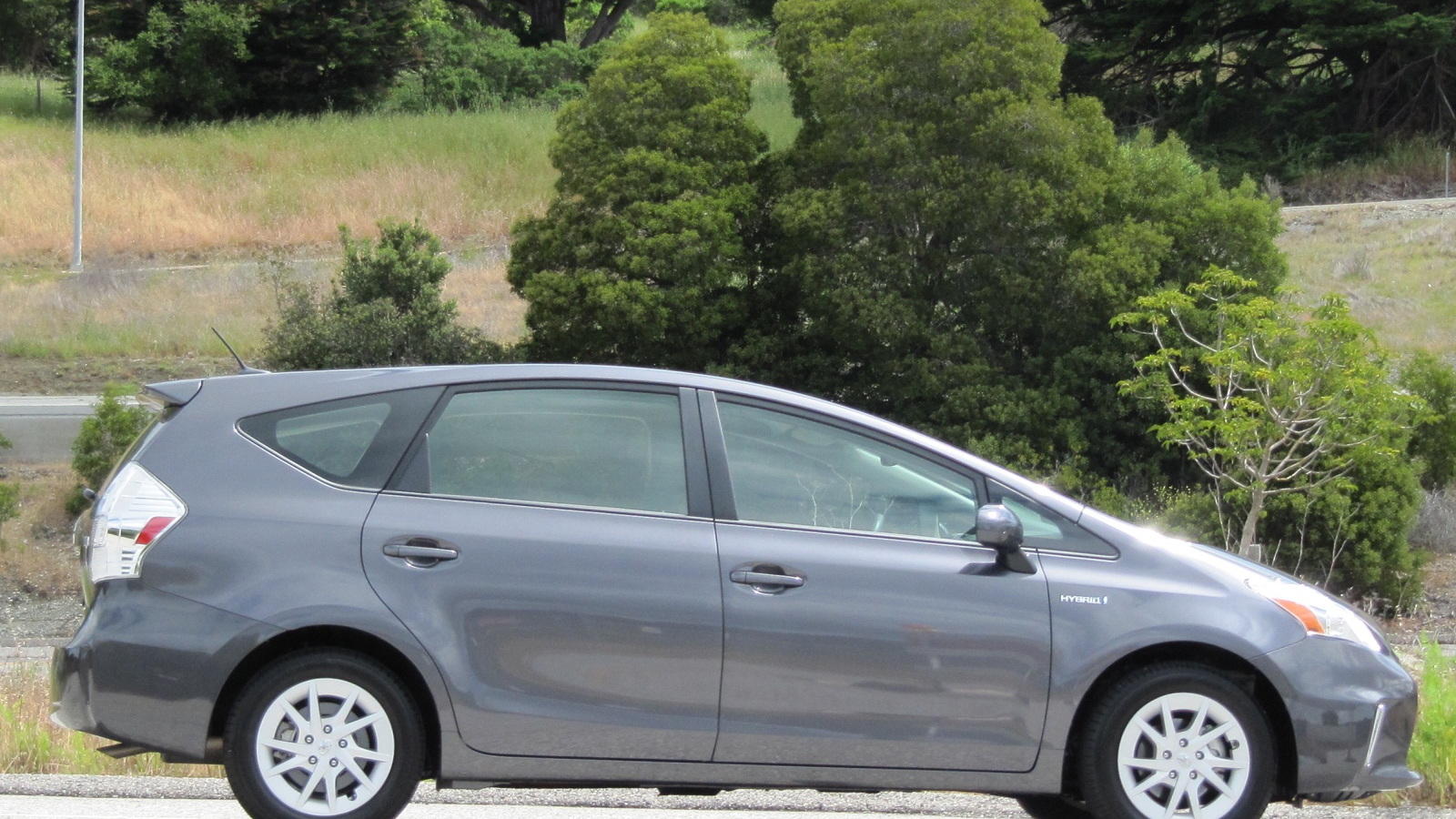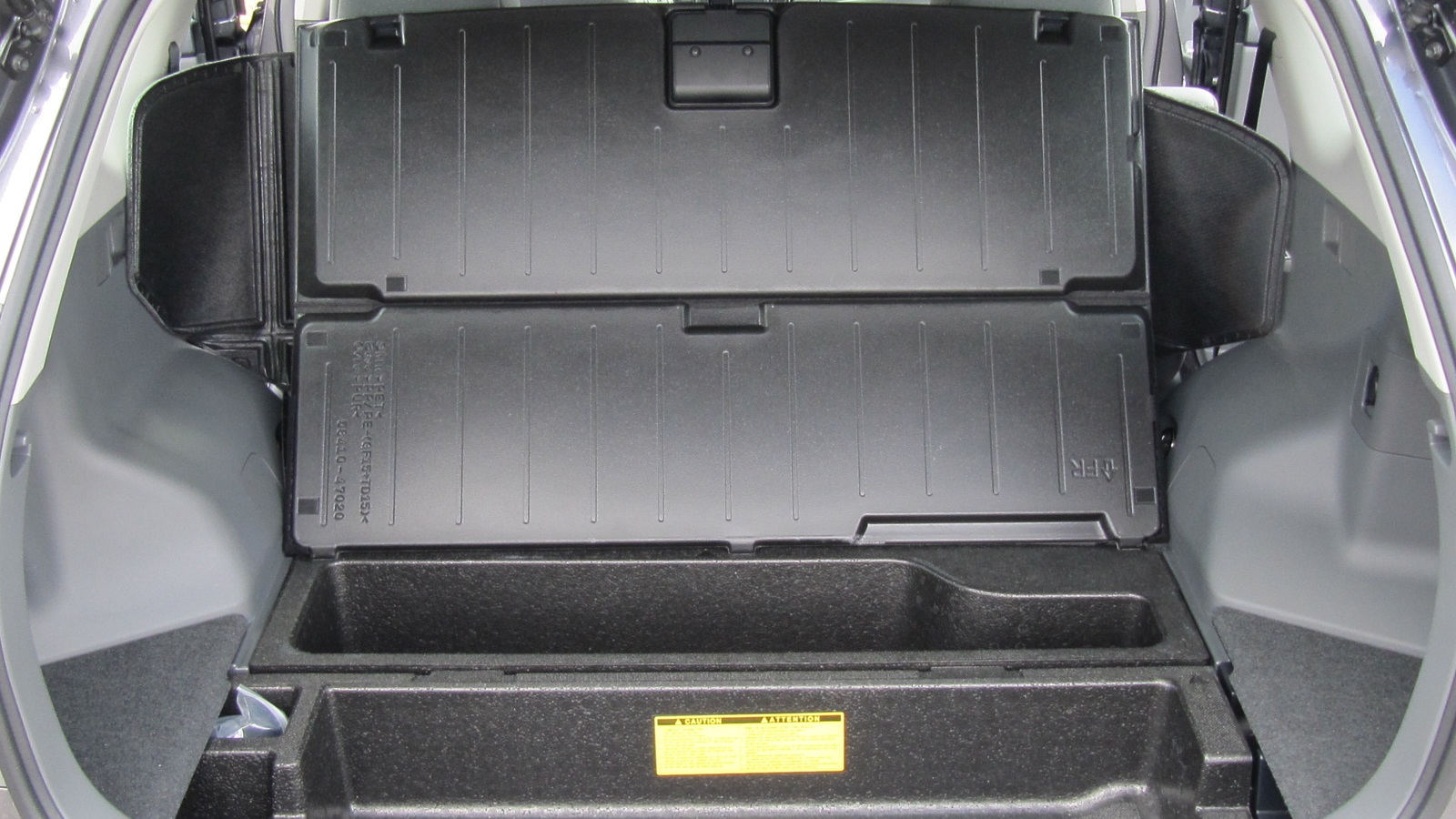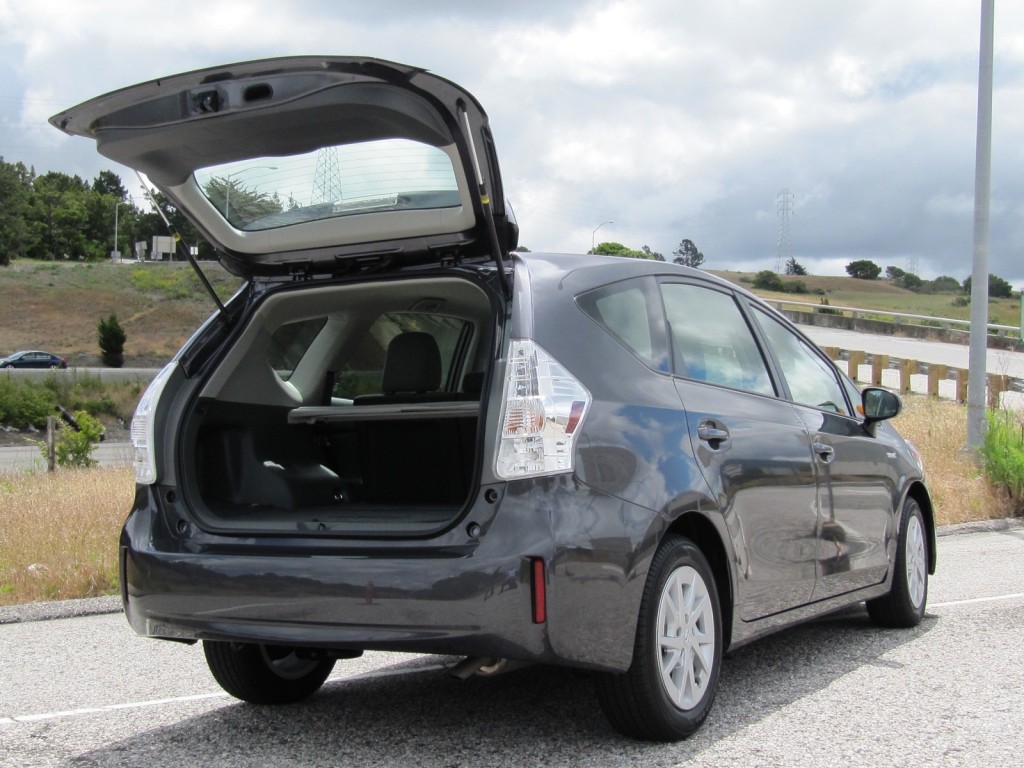
2012 Toyota Prius V station wagon, Half Moon Bay, CA, May 2011
Toyota executives will go to extraordinary, absurd lengths to avoid defining the body style of the new 2012 Toyota Prius V.
Bob Carter, brand sales chief for Toyota Motors in the U.S., first responded with confusion over the question.
Presented with a list of alternatives--sedan, hatchback, minivan, station wagon, sport utility vehicle?--he said, hesitantly, "Well, the government would define it as a station wagon."
So let's get one thing straight: The 2012 Toyota Prius V is a station wagon. It's not a minivan (no sliding doors, no third row) and it's certainly not a sport utility vehicle or crossover (no all-wheel-drive, no jacked-up ride height).
As such, it's a smart addition to the Toyota Prius hybrid lineup, the first of several vehicles that will expand the iconic Prius label beyond the current five-door hatchback model into different body styles and sizes
Just like a Prius, but less weird
Every body panel on the 2012 Toyota Prius V is different from the hatchback, but there's absolutely no mistaking it for anything other than a Toyota Prius hybrid.
From most angles, it looks more like a tall hatchback than a station wagon, perhaps deliberately. It's only with the tailgate open, looking at it from the back or side, that the squared-up rear end and vertical cargo opening become apparent.
The general consensus at the media preview was that the 2012 Prius V looks "just like a regular Prius ... but a little less weird."

2012 Toyota Prius V launch press conference, 2011 Detroit Auto Show
Two prominent features highlight the difference: First, there's no secondary rear window below the main glass in the tailgate, as there is on the hatchback.
Then, inside, the hatchback's "flying buttress" interior console has thankfully been replaced with a more traditional separate elbow bin and dashboard center stack that allows easy access to the cupholders, tray, and so forth mounted on the tunnel.
The dashboard again resembles the standard Prius, with the high-level central display offering a somewhat confusing array of numbers, icons, diagrams, and symbols in a handful of colors.
Little difference in performance
There's no question that the 2012 Prius V drives and handles like the "regular" Prius hatchback. While it's considerably larger in wheelbase and length, as well as slightly taller and wider, it's not notably different to drive.

2012 Toyota Prius V station wagon, Half Moon Bay, CA, May 2011
The driver sits higher than in the 2011 Prius hatchback, but it's hardly the command seating position of a sport utility wannabe.
The Prius V uses the same 98-horsepower, 1.8-liter four-cylinder engine and Toyota Hybrid Synergy drive system as the hatchback, along with a very slightly reshaped nickel-metal-hydride battery pack mounted under the front of the load-deck floor.
Toyota discussed some very minor tweaks to its hybrid hardware, including the addition of liquid cooling to the second motor-generator, but on the whole, the Prius V accelerates, drives, and brakes just like any other current Prius.
42 mpg combined
The fuel economy, however, is not as good as the 2011 Prius hatchback's EPA combined rating of 50 mpg, which breaks down into 51 mpg city, 48 mpg highway.
Toyota managed to better its original gas mileage estimates, with the final figures coming in at 44 mpg city, 40 mpg highway, for a combined rating of 42 mpg. (At the January Detroit Auto Show launch, it had estimated 42 mpg city and 38 mpg highway, giving an initial estimate for the combined rating of 40 mpg.)
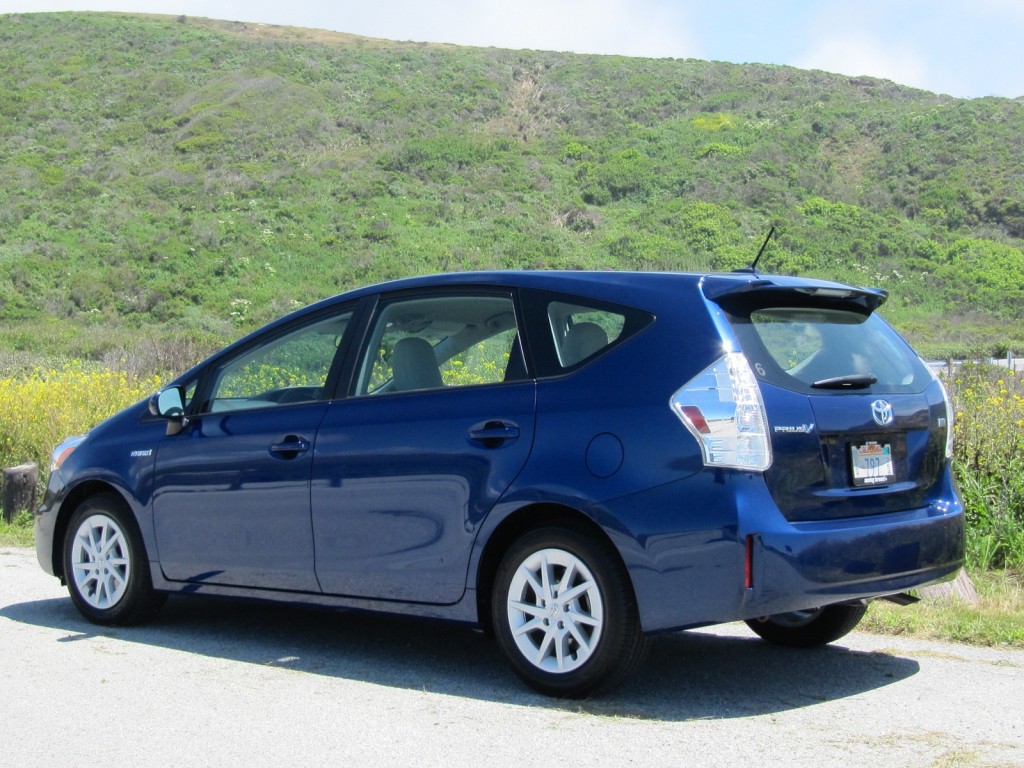
2012 Toyota Prius V station wagon, Half Moon Bay, CA, May 2011
(At a gas price of $4 per gallon, the difference between 42 and 50 mpg will cost just $15.25 every 1,000 miles, so it's not a huge penalty to upsize to the Prius station wagon model.)
With a curb weight of 3,274 pounds, the Prius V is roughly 300 pounds heavier than the Prius hatchback.
The extra avoirdupois, combined with the greater aerodynamic drag from the larger frontal area of a taller, wider car, is what consumes more fuel.
Wide load bay, sliding rear seat
But for a station wagon meant to haul people and stuff, the significant figures are capacities and measurements. The EPA says the Prius V has 34.3 cubic feet of cargo volume with the rear seat up in its rearmost position, and 40.2 cubic feet if it's slid as far forward as it'll go. Folding the rear seat takes cargo volume to 67.3 cubic feet.
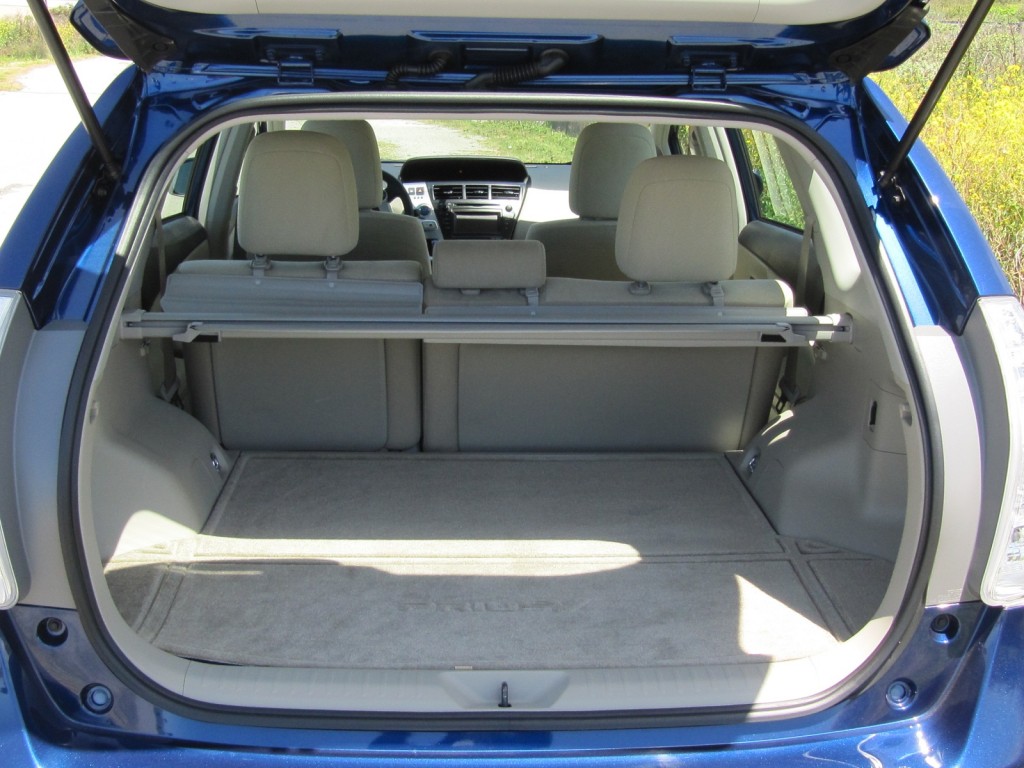
2012 Toyota Prius V station wagon, Half Moon Bay, CA, May 2011
Perhaps as important is the load floor. The Prius V had an admirable 39 inches between the insides of the wheel wells, ensuring that side boxes, dog carriers, and who-knows-what-else can slide in and sit flat on the floor.
The depth of the cargo bay with the seat up, was 36 inches from tailgate to seat back, and ranged from 68 to 72 inches with the rear seat folded down,depending on how far forward the front seats were pushed.
We did notice that once the rear seat slid all the way forward, an awkward trough opened up at the front of the load floor into which small toys, food particles, and other effluvia would undoubtedly fall.
Our one big quibble, however, was with the location of the rear seat-back releases.
They were at the sides of the seat, meaning that if you put a box into the load bay that was too large, then decided to flip down half the seat back so it would fit, you had to walk around the car, open the door, and bend over--versus other wagons that have a button right on top of the seat back itself, easily accessible from inside the load bay.
Seven airbags, usual safety stuff
The 2012 Toyota Prius V hybrid has seven airbags as standard: front driver and passenger, front-seat side airbags, side air curtains, and a driver's knee airbag.
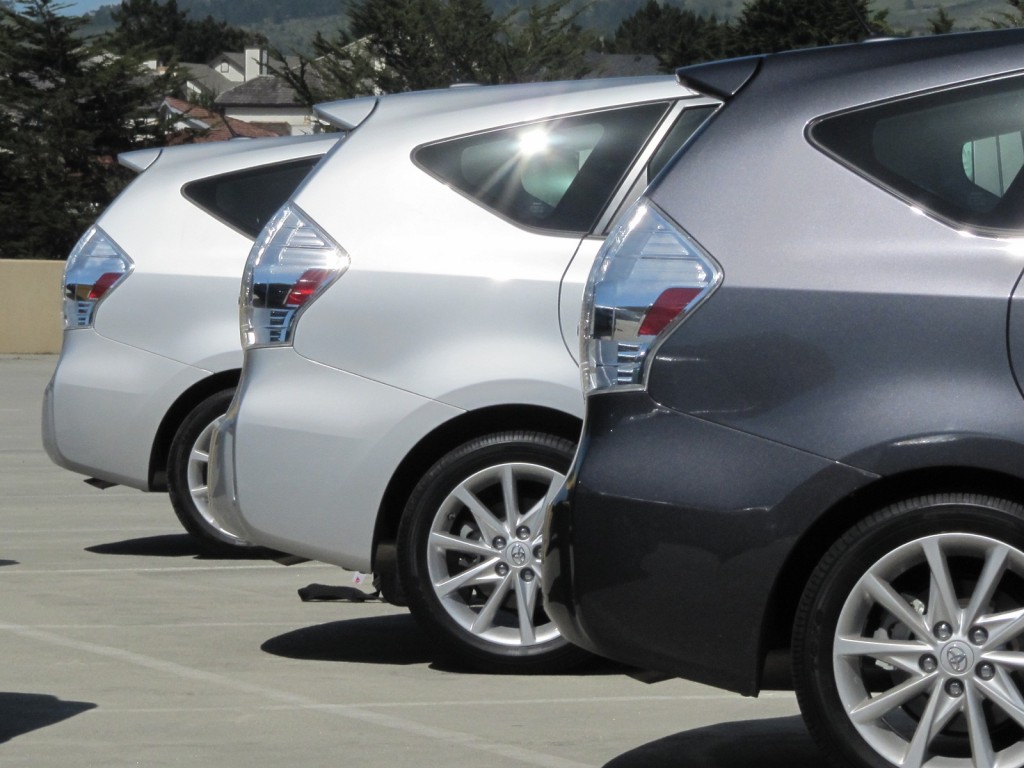
2012 Toyota Prius V station wagon, Half Moon Bay, CA, May 2011
It comes with the usual set of mandated safety equipment, including anti-lock brakes, traction control, and the newly mandatory tire-pressure monitoring system.
It has not yet been crash-tested by either the National Highway Traffic Safety Administration (NHTSA) or the Insurance Institute for Highway Safety (IIHS).
The IIHS rates the standard 2011 Toyota Prius as Good (its highest rating) for both frontal offset and side impact crashes and rear crash protection. The NHTSA gives the 2011 Prius hatchback 5 stars overall, with 5 stars for side-crash protection and 4 stars for frontal crash and rollover safety.
Three trim levels: Two, Three, and Five ?!?!?The 2012 Toyota Prius V comes standard with fabric trimmed seats, automatic climate control, a tilting and telescoping steering wheel, and--still rare in wagons--a rear seat that not only folds down and splits 60/40 but also slides fore and aft and reclines from 15 to 40 degrees.
There are three trim levels for the Prius V, confusing labeled Prius V Two, Prius V Four, and Prius V Five. Toyota explains that this mirrors three of the four trim levels on the hatchback, known respectively as Prius II, Prius IV, and Prius V (which is different from the Prius V station wagon, which technically uses a lower-case "v").
Got that?
In any case, the Prius V Two is the base model.
Upgrading to the Prius V Four adds a tilting-and-telescoping steering wheel with audio, Bluetooth, and climate controls in the steering wheel, plus voice-activated navigation controls.
It also builds in a display audio and navigation system with a 6.1-inch screen in the center console, and Toyota's Entune cloud-based infotainment system.
Top of the line
The Prius V Five adds 17-inch, 10-spoke alloy wheels, a six-way adjustable driver's seat with adjustable lumbar support, and a four-way adjustable front passenger seat, both of them heated and trimmed in SofTex fabric (lighter than leather). Also included: LED head lamps, integrated fog lamps, and a smart-key system.
The Advanced Technology Package, which can only be added to the Prius V Five, adds on top of all that an HDD navigation system, a panoramic view moonroof with electrically powered sunshades, and dynamic radar cruise control.
It also includes one free year's worth of the Safety Connect system, which provides emergency assistance, roadside assistance, automatic notification of emergency services in the event of a collision, and a stolen-vehicle location function.
The basic warranty on the 2012 Prius V is 3 years/36,000 miles, with 5 years/60,000 miles on all powertrain components except the hybrid system, which is warranted for 8 years/100,000 miles.
Pricing will be released closer to the car's arrival in dealerships, which will occur this fall.
Toyota provided airfare, lodging, and meals to allow High Gear Media to bring you this first-person drive report.
+++++++++++
